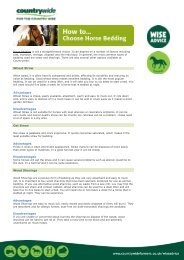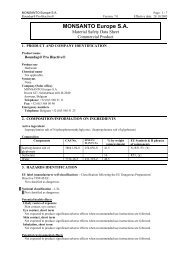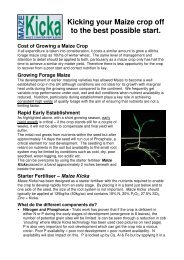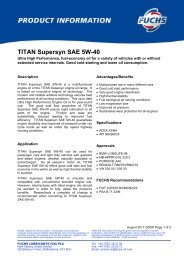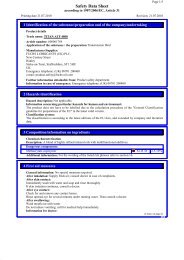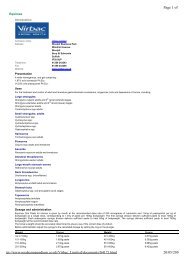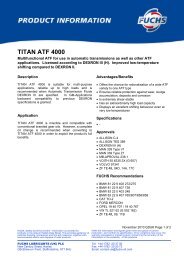DuPont Pioneer PACTS Book 2013/14
DuPont Pioneer PACTS Book 2013/14
DuPont Pioneer PACTS Book 2013/14
You also want an ePaper? Increase the reach of your titles
YUMPU automatically turns print PDFs into web optimized ePapers that Google loves.
<strong>PACTS</strong> <strong>Book</strong> Contents<br />
<strong>PACTS</strong> Results Summaries Page 4-8<br />
<strong>PACTS</strong> Hybrid Descriptions Page 9-17<br />
Maize & Inoculant Topics for <strong>2013</strong> Page 18-20<br />
<strong>PACTS</strong> Individual Site Results Page 21-31<br />
<strong>PACTS</strong> Site Agronomy Details Page 32-33<br />
<strong>PACTS</strong> Trials Background Information<br />
The purpose of <strong>PACTS</strong> Trials<br />
Whether a particular maize hybrid realises its full genetic potential depends largely upon<br />
how well it is adapted to the local environment and how successfully it is managed.<br />
The <strong>PACTS</strong> Trial Results are intended to help growers identify which Du Pont PIONEER<br />
hybrids are best suited to their location and circumstances, and additionally indicate<br />
agronomic techniques that may help maximise yields.<br />
Layout<br />
Each <strong>PACTS</strong> Trial is established within a commercial crop of maize and is planted and<br />
harvested by the host farmer with the assistance of <strong>Pioneer</strong> staff. All trials are managed<br />
as part of the field and the results are reflective therefore of the effect of local weather<br />
conditions and actual crop management practices.<br />
A <strong>PACTS</strong> trial is generally comprised of between 15 and 20 plots. The plots are planted<br />
in identically sized marked areas adjacent to each other across a uniform part of the<br />
selected field. Each plot is usually 6 or 8 rows wide and normally 50 metres in length.<br />
Typically every fourth strip is the same hybrid and is designated as a Control variety. The<br />
Control hybrid provides data that can be used to offset the misleading effect of soil type<br />
changes across a trial. In 2012 the Control hybrid was PR39V43.<br />
Sites<br />
Each trial site is classified as being Favourable or Less Favourable depending upon the<br />
heat accumulation that would be typically measured at that location. The results from<br />
individual trials are detailed in this book however due to space restrictions some trials<br />
are not shown. The results from trials not shown are available on request. All trials<br />
harvested are detailed in the Agronomy Details section of this book.<br />
Competitor Hybrids<br />
Typically four varieties from competitor plant breeding companies, which have been widely grown commercially in<br />
previous years, are included in each <strong>PACTS</strong> Trial. The competitor hybrids used in 2012 were Kaspian, Surprise, Kougar<br />
and Fabregas.<br />
Maize Hybrid Selection<br />
The selection of a particular hybrid for cultivation inevitably varies according to the different criteria a grower has.<br />
In many situations yield is of paramount importance but earliness of maturity is usually another critical factor. Other<br />
factors such as standing power, silage nutritional quality and end-use intentions e.g. whole plant silage fed to livestock<br />
or used for biogas production should be taken into account. No single hybrid will suit all situations.<br />
2



